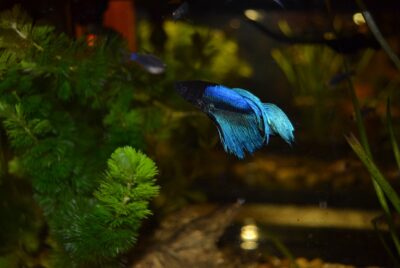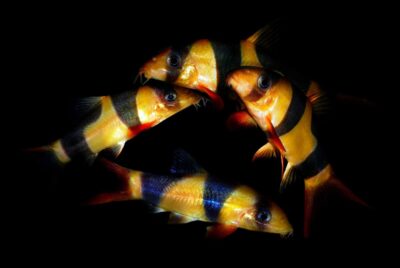How to Aquascape a Reef Tank
Introduction
‘How to Aquascape a Reef Tank?’ As an avid fishkeeping enthusiast and passionate aquarist, I have always found solace and wonder in the mesmerizing beauty of reef tanks. Aquascaping, the art of creating and arranging aquatic landscapes, plays a vital role in transforming a simple fish tank into a captivating underwater ecosystem. In this article, I will guide you through the process of aquascaping a reef tank, providing valuable suggestions and reasons behind them. So, let’s dive in and explore the enchanting world of aquascaping!
Understanding the Basics – (How to Aquascape a Reef Tank)
Before delving into the intricacies of aquascaping, it is essential to grasp the fundamental concepts. Aquascaping involves meticulously designing and arranging elements within a tank to create a visually appealing and biologically balanced environment. To ensure success, proper planning and thorough research are crucial. A well-designed reef tank not only enhances the aesthetics but also promotes the health and well-being of its inhabitants.
Selecting the Right Tank and Equipment
Choosing the appropriate tank size is the first step in aquascaping a reef tank. Larger tanks provide more stability and ample space for various species, while smaller tanks require precise maintenance. Selecting the right filtration system is equally vital to maintain water quality. Options such as protein skimmers, biological filters, and chemical filtration methods should be considered based on the tank’s specific requirements. Additionally, lighting and heating equipment should be carefully chosen to mimic natural conditions and support the growth of corals and other marine life.
Planning Your Aquascape
To create a captivating aquascape, it is essential to have a clear vision of the desired theme and style. Are you inclined towards a vibrant and colorful reef, or do you prefer a more minimalistic and serene layout? Once determined, employing the rule of thirds and identifying focal points will help create a visually balanced and engaging composition. The use of live rock and live sand adds natural elements and aids in biological filtration.
Creating Depth and Dimension
A well-executed aquascape should evoke a sense of depth and dimension, replicating the complexity of the underwater world. Achieving this requires careful consideration of various elements. Utilizing different heights and levels within the tank, such as elevated rock formations or the strategic placement of corals, can add visual interest. Incorporating a variety of rock structures, like arches or caves, further enhances the three-dimensional effect. Balancing negative space and positive space creates harmony and ensures the focus remains on the main elements of the aquascape.
Choosing Suitable Livestock
When selecting livestock for your reef tank, compatibility is paramount. It is vital to research and understand the specific requirements and behavior of fish, corals, and invertebrates to avoid any conflicts or detrimental effects on the ecosystem. As a beginner, it is advisable to choose hardy and beginner-friendly species that can thrive in a reef tank environment. By carefully curating your aquatic community, you can ensure a harmonious and balanced ecosystem.
Maintaining Water Quality – (- (How to Aquascape a Reef Tank))
Maintaining optimal water quality is crucial for the health and longevity of your reef tank inhabitants. Understanding the nitrogen cycle and monitoring water parameters regularly is essential. Regular testing and adjustments of parameters such as ammonia, nitrite, nitrate, pH, and salinity are necessary to maintain a stable and healthy environment. Implementing a suitable filtration system, conducting regular water changes, and providing adequate oxygenation are vital for the well-being of your aquatic ecosystem.
Sustaining a Healthy Environment
In addition to maintaining water quality, it is essential to address other factors that contribute to a healthy reef tank. Proper lighting and nutrition are vital for the growth and vitality of corals. Choosing appropriate lighting systems that provide the necessary spectrum and intensity will support photosynthesis and the vibrant colors of the corals. Maintaining the right temperature and salinity levels is also crucial for the overall well-being of your tank inhabitants. Additionally, addressing common issues such as algae growth and diseases promptly will help sustain a healthy and thriving reef tank.
Incorporating Aquascaping Techniques
Aquascaping techniques offer a range of possibilities to bring your vision to life. Various styles, such as the island layout, peninsula layout, or canyon layout, allow for creative expression and customization. Additionally, using frag plugs for coral propagation and employing aquascaping tools like tweezers and scissors can aid in achieving the desired arrangement. Remember, aquascaping is a gradual and patient process, requiring ongoing adjustments and fine-tuning to achieve the desired results.
Ensuring Long-Term Success
To ensure the long-term success of your reef tank, it is essential to maintain a proactive and attentive approach. Regular observation and maintenance are key. Keep an eye on water parameters, livestock behavior, and signs of any potential issues. Seeking advice from experienced aquarists, joining fishkeeping communities, and participating in forums can provide valuable insights and guidance. Remember, the journey of aquascaping is a continuous learning process, and there is always room for improvement and growth.
Conclusion – (How to Aquascape a Reef Tank)
In conclusion, aquascaping a reef tank is a rewarding and fulfilling endeavor that allows you to create a breathtaking underwater oasis in the comfort of your home. By understanding the basics, carefully selecting equipment, planning your aquascape, and maintaining water quality, you can build a thriving and visually captivating reef tank. Embrace the joy and satisfaction of witnessing the beauty and harmony of your aquatic masterpiece.
Frequently Asked Questions – (How to Aquascape a Reef Tank)
Q: Can I use tap water for my reef tank?
A: Using tap water for a reef tank is generally not recommended. Tap water may contain impurities, such as chlorine or heavy metals, which can be harmful to your tank’s inhabitants. It is advisable to use purified or RO/DI (Reverse Osmosis/Deionization) water, which ensures a clean and safe environment for your reef tank.
Q: How long does it take to establish a stable reef tank?
A: Establishing a stable reef tank can take several weeks to months. The process involves cycling the tank, which allows beneficial bacteria to establish and convert harmful ammonia and nitrite into less toxic nitrate. Patience is key during this period, as rushing the process can lead to imbalances and unhealthy conditions for your tank’s inhabitants.
Q: What are some beginner-friendly corals for aquascaping?
A: For beginners, it is advisable to start with hardy and beginner-friendly corals such as mushroom corals, zoanthids, or soft corals like pulsing xenia or leather corals. These corals are relatively easy to care for and can add vibrant colors and movement to your aquascape.
Q: How often should I clean my reef tank?
A: Regular maintenance is crucial for a healthy reef tank. Conducting partial water changes of around 10-20% every two weeks helps remove accumulated nitrates and replenish essential elements. Additionally, cleaning the glass, removing any debris or excess algae, and maintaining the filtration system should be performed as needed to ensure optimal conditions.
Q: Can I keep other fish with my reef tank inhabitants?
A: Compatibility is essential when adding other fish to your reef tank. Some fish species may be aggressive towards corals or invertebrates, causing damage to the aquascape. It is advisable to research the specific requirements and behavior of potential tankmates before introducing them to your reef tank. Selecting fish species known to be reef-safe and compatible with your existing inhabitants will help maintain a peaceful and harmonious environment.




